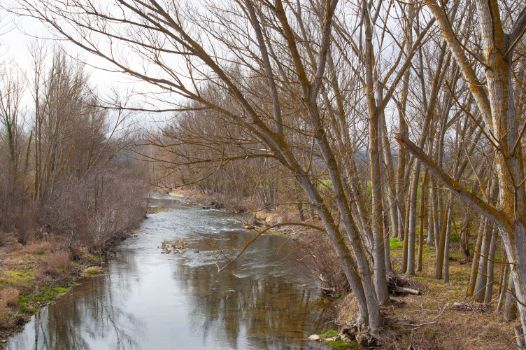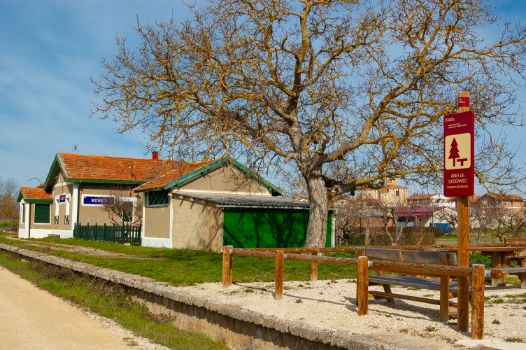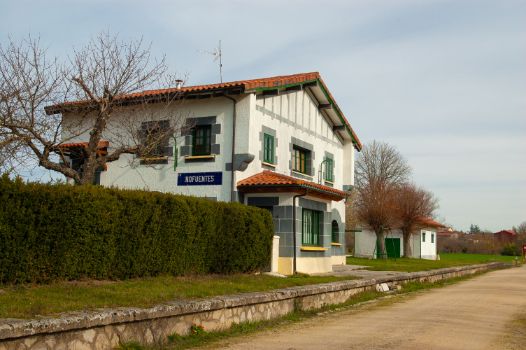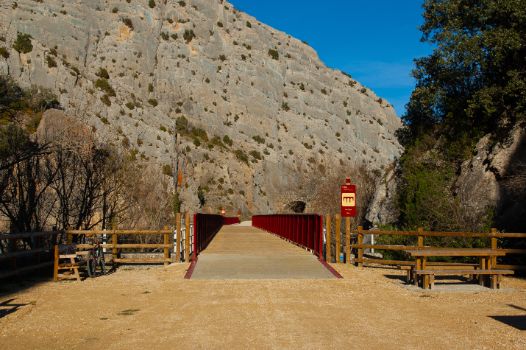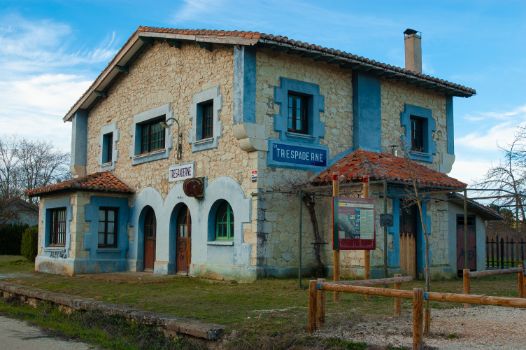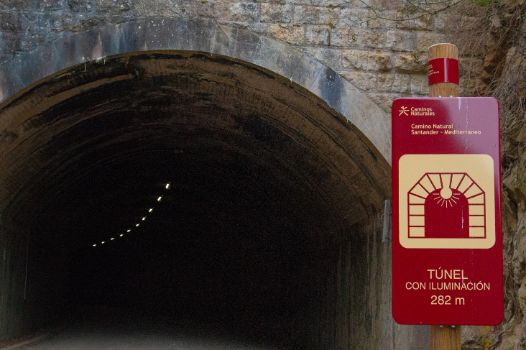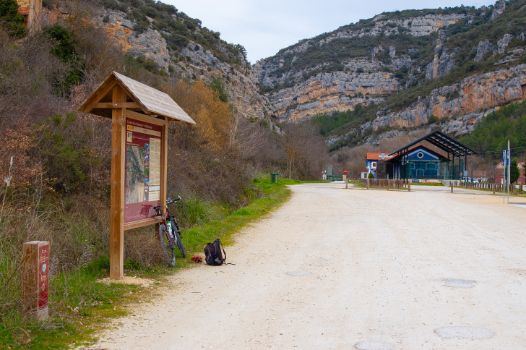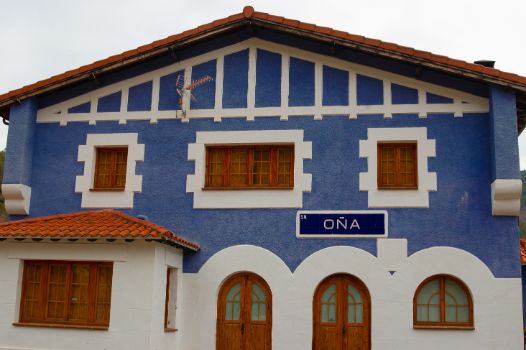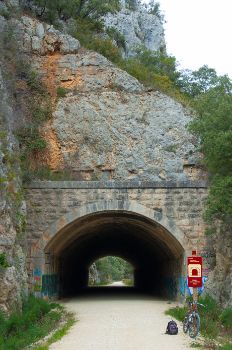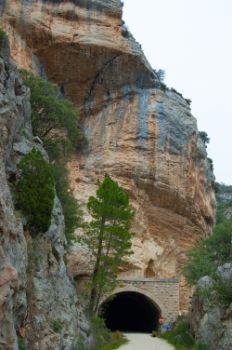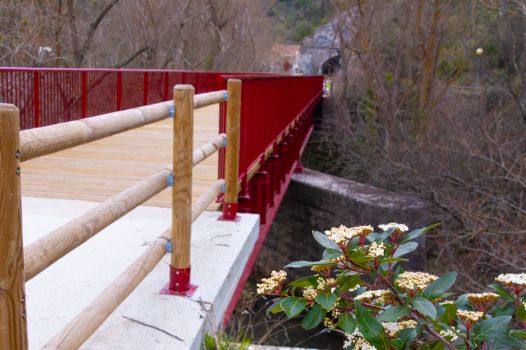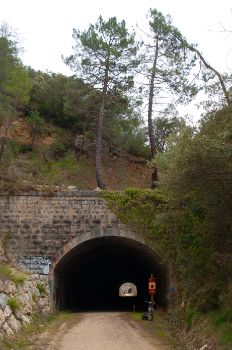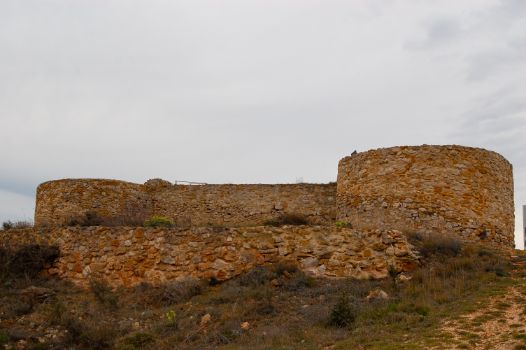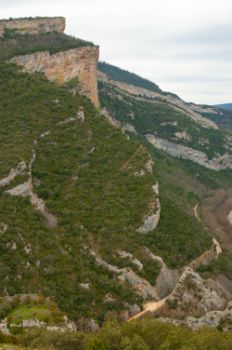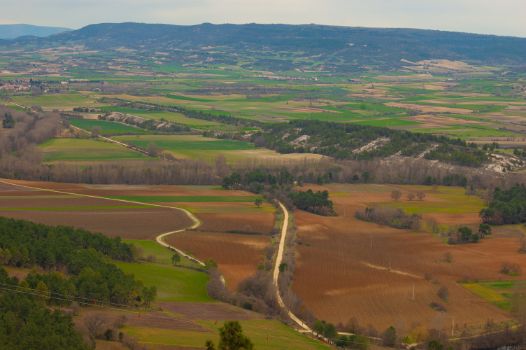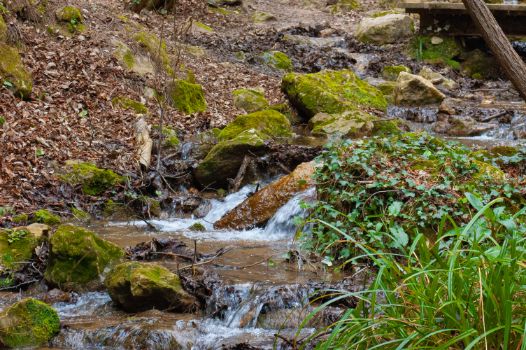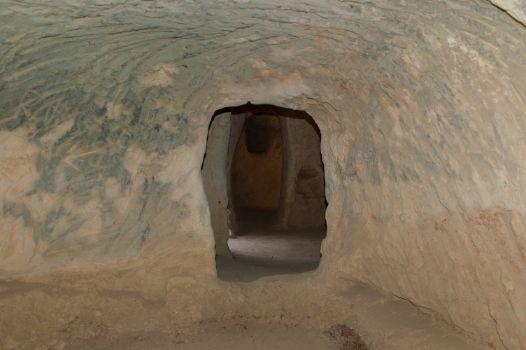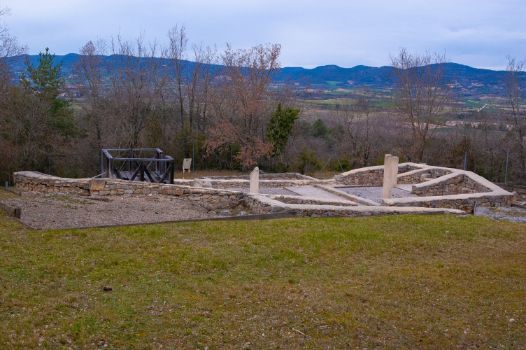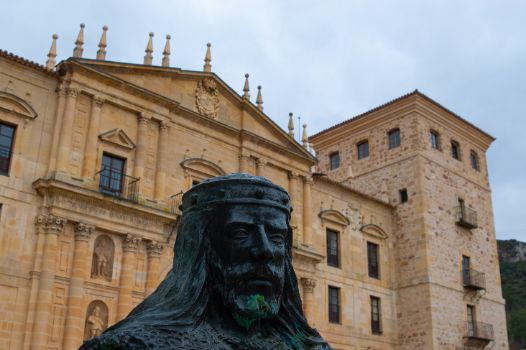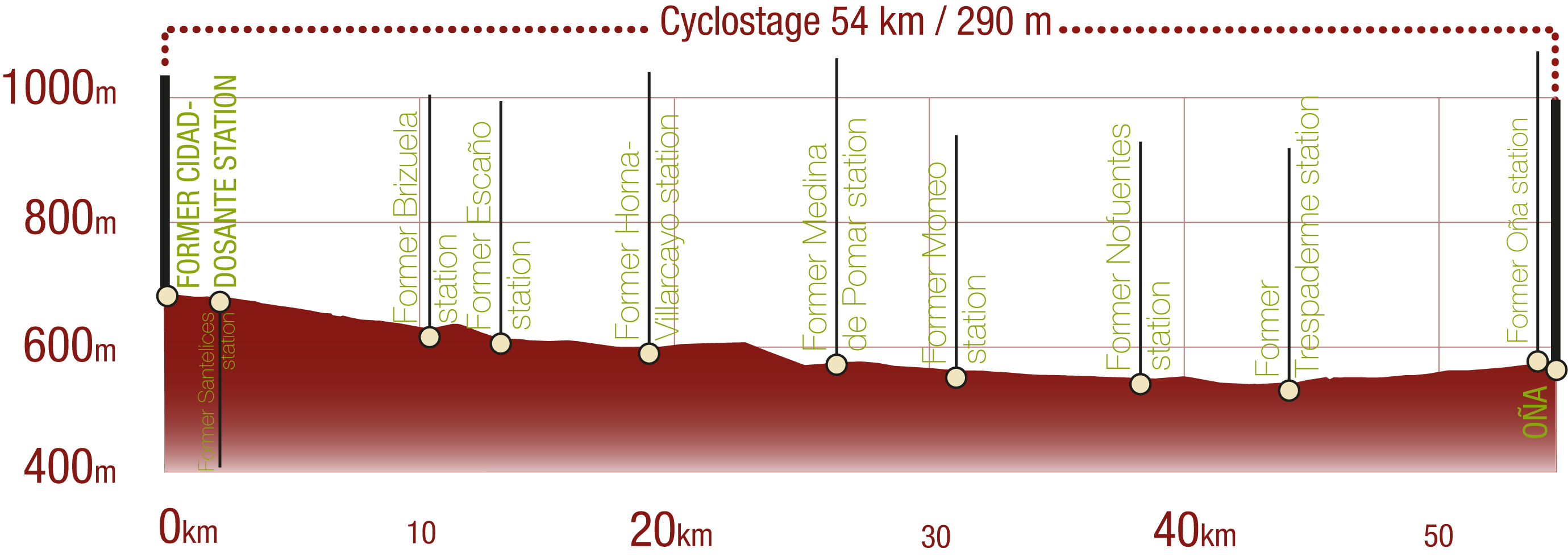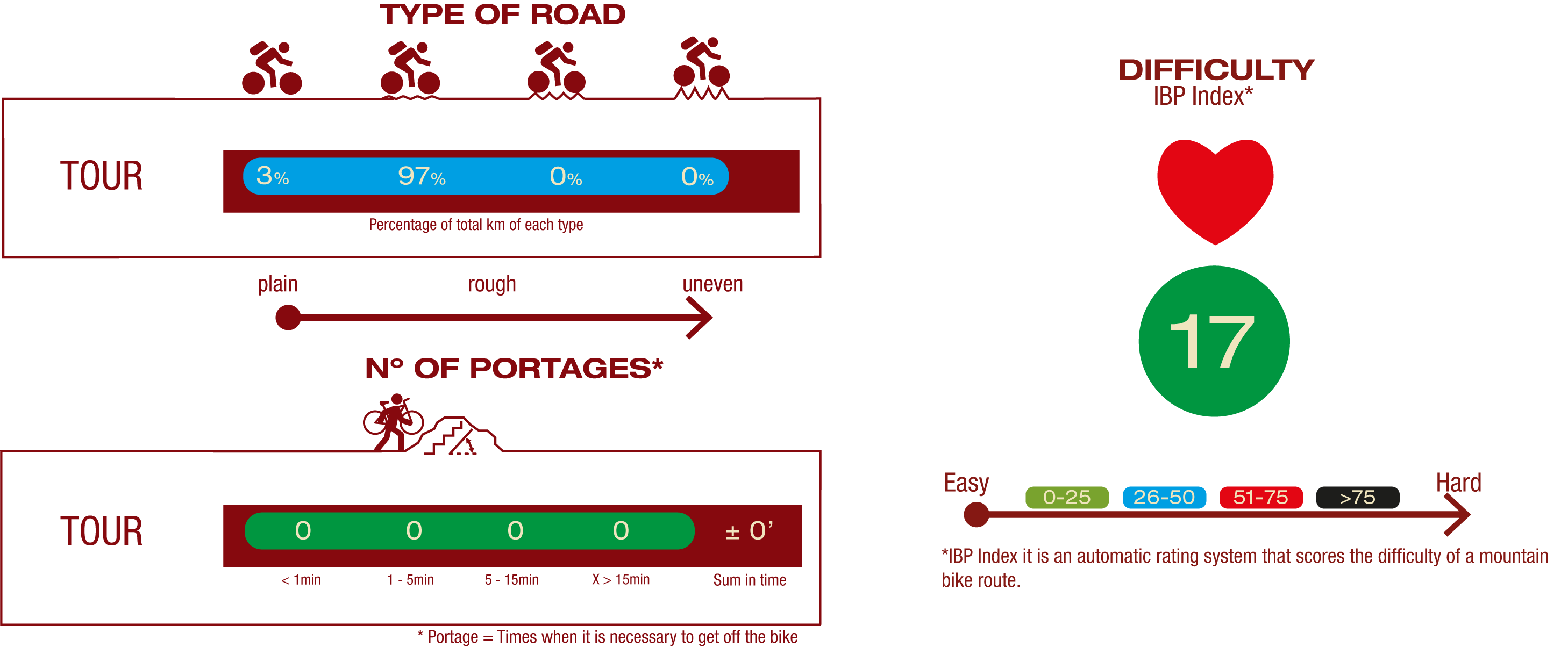
Net of Natural
Trails

Stage: Medina de Pomar - Oña
Description
The four rivers: from the Trueba to the Nela, from the Nela to the Ebro, and finally up the river Oca.
An impressive stage of just over 25 kilometres between the old railway stations of Medina de Pomar and Oña, linking these two towns steeped in history through the Ebro River Canyon, in the heart of the Horadada Gorge. The route also passes through Trespaderne, a spectacular town that has been defended since ancient times by the fortress of Tedeja.

The stage of the Santander-Mediterranean Nature Trail stretches from Medina de Pomar to Oña, between the two railway stations in both towns. The adventure starts at kilometre point 0, located at the rest area next to the railway complex. Leaving the old station behind, the traveller heads south-eastwards, following the old railway line faithfully through unirrigated farmland surrounded by different mountain formations in the middle distance, forming a mosaic of unparalleled beauty.
After completing the first kilometre of the stage, the wide range of rivers that awaits the hiker on this fascinating route begins. First, it crosses the old railway viaduct over the river Trueba, one of the main tributaries of the river Nela. This riverbed and its riverside vegetation are protected within the Site of Community Importance (SCI) Riberas del río Nela y afluentes.

The journey continues with a signposted path to the nearby villages of Villacomparada and Bustillo de Medina or Villarcayo, both of which are located off to the left of the route. The church of San Juan Evangelista in Villacomparada and the church of San Pedro in Bustillo de Medina stand out, surrounded by fertile orchards.
A few kilometres further on, you will reach the hermitage of the Virgen de Cantarranas, just before the village of Moneo, where the sturdy church of San Saturnino dominates. Immediately afterwards, the old Moneo station comes into view, offering a rest area where you can take a break and explore the building, which is still in a good condition.

Continue on your way and, shortly after passing kilometre 5 of the stage, you will come to the village of Pradolamata, the first village in the municipality of Merindad de Cuesta-Urria that is crossed on the route.
The kilometres tick by in the company of the river Nela, which gratefully collects the waters of its tributary, the river Trueba, in the vicinity of Moneo. From then on, this faithful companion will guide you to the crossroads with the road that leads from Nofuentes to Urria, where extreme caution is recommended to reach the rest area located before the old station of the town. This station, along with two other railway buildings that served it, is in decent condition.
Further on, take care once again before crossing the road to Nofuentes, which offers the option of visiting this beautiful town in Burgos, where the town hall and the parish church in honour of San Pedro and San Pablo stand out.
Before completing the first 12 kilometres of the stage, you will come to the road leading to Mijangos. At this point it is worth taking a moment's detour to visit the town and enjoy its many charming features, such as the parish church of San Tirso Mártir, the medieval bridge over the river Nela and the hidden Visigothic church of Santa Maria de Mijangos.

Returning to the route, and advancing along the river Nela, it crosses an old railway viaduct of 52 m in length, which is fully equipped for hiking and cycle touring.
The shrub and tree vegetation intensifies as we approach Trespaderne, where the River Nela ends its journey, flowing into the River Ebro to the south of the town centre. Don't miss the opportunity to visit the parish church of San Vicente Mártir and the Romanesque bridge over the river Nela. But the charms of Trespaderne are not limited to the town centre. Back on the route, at the crossroads before the old Trespaderne station, the cemented track up to the fortress of Tedeja begins. The climb, although it requires some effort, offers an incomparable reward: in addition to the architectural heritage of this defensive complex from the Middle Ages, you can enjoy a 360º panoramic view that ranges from the picture-postcard view of the town of Trespaderne to the Santander-Mediterranean Nature Trail, not forgetting the canyon of the Ebro River with its impressive geological formations, including the Larra peak dominating the gorge.

The stage continues to the old Trespaderne station welcomes cyclists with its rest area equipped with an information board that reveals the secrets of the area. The old railway warehouse has now been converted into the Desfiladero de la Horadada Archaeological Interpretation Centre, the perfect place to learn more about this area in a fun and entertaining way.
Without further ado, the route turns southwest, reaching kilometre marker 16 of the stage, entering the Horadada gorge. Very near here, at what is known as the Valdecastro Bridge, is the Ebro Nature Trail, a long route that follows the course of this great river from its source at Fontibre to its mouth in the Mediterranean Sea in the Ebro delta.

Once in the heart of the Ebro Canyon, the scenery, of course, becomes spectacular, with geological and plant formations of great beauty, which you can enjoy to the full while following the gentle slopes of the old railway line. The old tunnels and viaducts, designed to counteract orographic difficulties, create a thrilling experience for cyclists.
The fun begins as you pass through a 66 m long tunnel with no artificial lighting, which you are advised to traverse armed with a torch, although it is straight and you can see the exit without any problem from the entrance. Behind the tunnel, there are two viaducts, the first goes over the N-629 road and the second over the great river Ebro. You will then come to a rest area with an information board that allows you to enjoy this magnificent place in peace and quiet.
At kilometre marker 18, you will be close to the Pontarrón or Portuguese Caves, which are worth a later visit, as it is not possible to access them from the nature path due to the barrier created by both the river Ebro and the N-629 road, which are impossible to cross in this area.

The forests of this gorge of La Horadada are made up of a mixture of broadleaf and coniferous trees, home to a multitude of animal species. There are no words to describe the spectacular surroundings, because without a doubt the best option is to visit it, enjoy it and experience it first-hand.
Some way after kilometre point 21, the longest tunnel of the stage is reached, 282 m long and curved, with artificial lighting. This tunnel, whose entrance is next to the river Ebro and exit is close to the river Oca, marks the point where the path begins to follow the river Oca upstream, just as the train did along the old railway line.
After kilometre 22, you will pass the Santé estate on your left, a private palace built in the 16th century, which is not open to the public. We face the last kilometres of the stage, with the river Oca as our faithful companion, overcoming two successive tunnels of 42 and 190 m in length respectively, followed by the viaduct over the river Oca and a new tunnel of 84 m in length. Then, after another 450 m, you go through the last tunnel of the stage, which is 69 m long.

After all this hustle and bustle, you will come to the rest area before the old Oña station, which is in a perfect condition and is currently a tourist hostel managed by the Junta de Castilla y León. This renovated former railway complex includes the Gregorio Moreno Sports Centre, located in the old warehouse, and a new wooden building. A range of leisure and sports facilities complete the complex, including indoor courts and a parking area for motorhomes.
Next to the car park the information board and kilometre 0 point mark the end of this exciting stage between Medina de Pomar and Oña, and at the same time invite you to take a break and get ready to face the next stage of the spectacular Santander-Mediterranean Nature Trail that begins here.
Managing Entities
Links of Interest
Puntos de interés
Passport
Profile
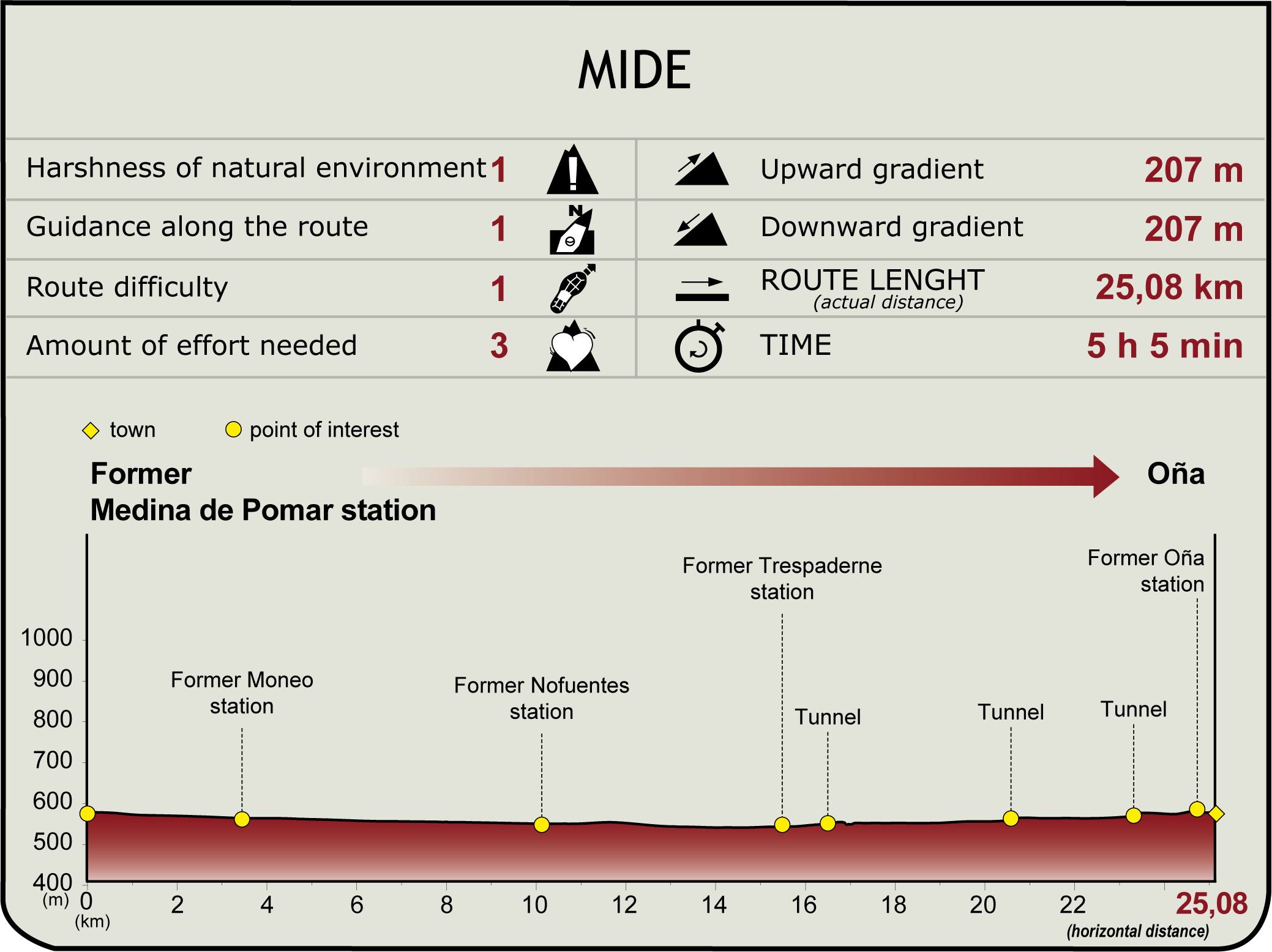
(Calculated according to the MIDE criteria for an average excursionist with a light load)
Highlights
Further information
Tedeja Fortress
This defensive complex is located in the Sierra de La Tesla mountain range, at the beginning of the Horadada gorge and close to the mouth of the River Nela in the River Ebro. The origins of Tedeja date back to the 5th century, in the late Roman period, when defensive towers known as turris began to be built. A century later, the construction of the masonry wall with central filling began and much remodelling and new construction work was carried out to meet the defensive needs of the time. The construction of the six definitive towers was delayed for several centuries, and the defensive complex remained operational until the 13th century. Today it can be visited freely, enjoying its history and the panoramic views afforded by its superb location.
Cuevas del Pontarrón o de los Portugueses
These caves, dug by humans on both sides of the Las Torcas stream, date from the 8th or 9th century. Originally, they had separate rooms, which were accessed through an opening that served as a door. The reason for its construction is the subject of two hypotheses: one that says that it may have been inhabited by a group of monks and therefore had a religious vocation, and another that maintains that it was an town centre populated by semi-nomads dedicated to livestock farming.
Whichever is true, today they are known as Cuevas de los Portugueses (Caves of the Portuguese) because workers from the neighbouring country settled here in the early 20th century to work on the canal of the Trespaderne hydroelectric power station. It was these later inhabitants who connected the rooms with each other and made several other modifications, resulting in the appearance it has today.
Multimedia
Downloads
GPS Downloads
Documents
Cyclability
CICLABILITY
This Cyclostage corresponds to stage Cidad Dosante Station - Medina de Pomar of and stage Medina de Pomar - Oña of the Nature Trail
TYPE OF ROADS, PORTAGES & DIFFICULTY
GENERAL RECOMMENDATIONS
- Find out about the technical aspects of the route and the weather on the day.
- Take care of the environment. Take care not to disturb animals or damage vegetation. Respect private areas.
- You must give priority to pedestrians and comply with general traffic rules.
- The environment in which you will be riding is open, free to move around and an area where many activities are carried out (sporting, forestry, livestock and agricultural activities).
- Always have an understanding, prudent, responsible and respectful attitude.



